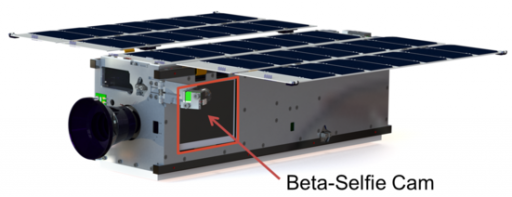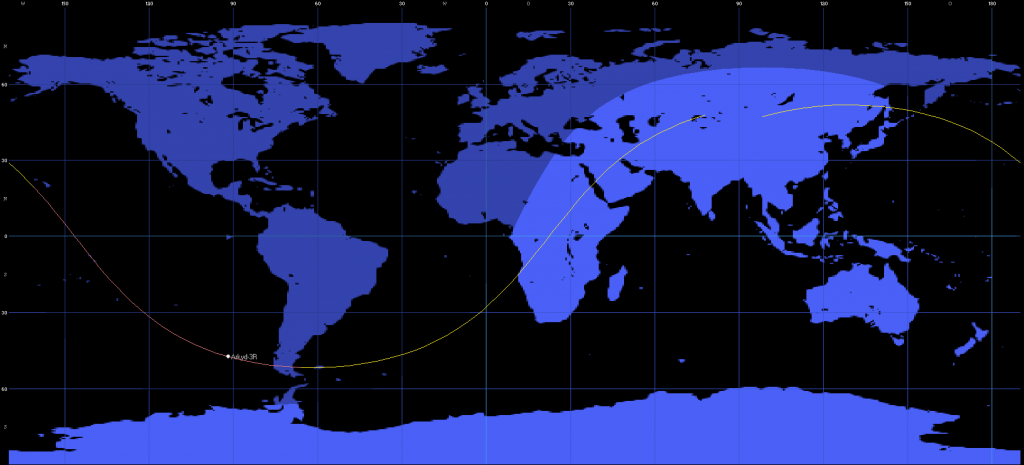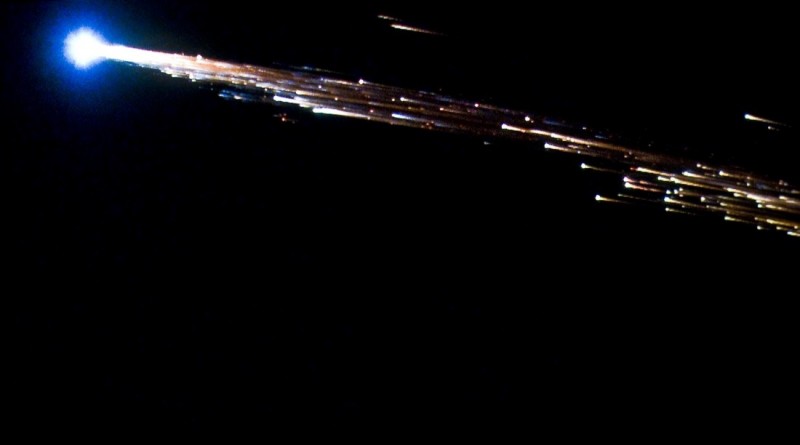Re-Entry: Arkyd-3R

The Arkyd-3R CubeSat operated by Planetary Resources re-entered the atmosphere on December 23, 2015 after five months in orbit to test systems for future miniature space telescope satellites.
NORAD ID: 40742
Origin: USA
Object: Arkyd-3R
Type: 3U CubeSat
Mass: ~3kg
Inclination: 51.6°
Launched: April 14, 2015 – 20:10 UTC
Launch Vehicle: Falcon 9 (Dragon CRS-6 Mission)
Launch Site: SLC-40, Cape Canaveral
Released from ISS: July 16, 2015
Re-Entry Prediction: December 23, 2015 – 05:30 UTC +/-41 Minutes
Re-Entry Zone: Unknown
Arkyd-3 is the first technology demonstration satellite launched by Planetary Resources to test technology used on the larger Arkyd-100 space telescope. The satellite essentially comprises the entire bus system of the Arkyd-100 for testing of the avionics, attitude determination sensors and actuators, an integrated propulsion system for proximity operations, and all associated software used in spacecraft operation and ground control. The mission will also demonstrate ground systems for data and command exchange. Details on the satellite systems have not been provided.
The Arkyd-100 satellites will have a mass of around 15 Kilograms featuring a telescope for operation in Low Earth Orbit. These satellites would be used to locate asteroids, provide Earth imagery and acquire images for the study of other objects down to a brightness of magnitude 19. The optical payload would also support optical communications for data exchange at high data rates.
Planetary Resources has detailed a strategic plan with the ultimate goal of developing a robotic asteroid mining capability. The first stage of this plan is the operation of technical demonstrator and surveying satellites. Several small space telescopes are planned to locate asteroids of interest and acquire images of other targets with spacecraft also available for use by paying customers. The next stage of the plan will be survey missions of spacecraft flying to near-Earth asteroids to conduct in-depth studies. The ultimate step will be the retrieval of asteroid material for return to Earth or for use in space. Another concept the company is working on includes the control of the orbits of small asteroids.
Re-Entry Orbit


